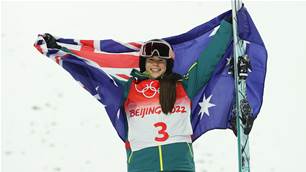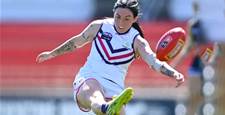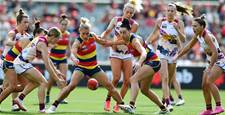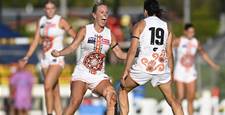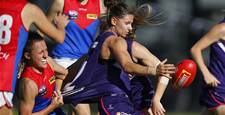The Women’s Game first Roundtable was held on May 17 in Sydney.
The following were in attendance:
Angela Bacic – Editor of The Women’s Game via phone
Cheryl Downes – Co-editor of The Women’s Game
Adam Jackson – Head of Sport – Sales Nextmedia
Jeff Centenera – Editor of Inside Sport
Danielle Warby – Advocate for Women in Sport
Lindsey Cane – CAS Ambassador and former CEO of Netball Australia
Anne Jackson – Sport Development Group
Susie Warwick – Director of Ski & Snowboard Australia
Throughout the roundtable discussion, it was acknowledged that girls from the grassroots level and up are less likely to participate in team sports (refer to section two) and women are still less likely to put their hand up for a coaching role.
The conversation was passionate and delved further, wider and deeper than first expected. The discussion from the roundtable has been fitted into the below points to create an action plan for the future on how The Women’s Game can help in this area.
1. Overview of the recent history of women’s participation numbers
AusPlay is a national telephone survey funded and led by the Australian Sports Commission.
From both AusPlay Survey’s (in 2016 and 2017), the running theme is that young girls aged 0-14 are less likely to participate in sport-related activity including; running and dancing compared to boys of the same age.
1.1 AusPlay Survey 2016 and 2017 key points
- The 9-11 age group is the highest participation age with 93 percent, which dropped to 85 percent in 2017
- Girls aged 0-4 and 5-8 have high participation rates with 41 and 79 percent which grew to 51 and 85 percent in 2017
- Top 5 barriers stopping children from participation; Not a priority, not enough time/too many other commitments, wrong age, doesn’t like physical activity or already does enough physical activity
- 75 percent of children who have at least one active parent would be more to likely participate in sport outside of school
- Barriers to participating: cost, children of LOTE parents, living in regional or remote areas and a dislike of physical activity (especially in 9-11 girls group)
Overall, there is a noticeable drop in the 12-14-year-old age group compared to boys of the same age. During the roundtable, it was discussed that the possible reasoning behind this was boys make friends through playing in a team sport and will stay in the sport with those friends they make while girls make friendships through talking at school or at social gatherings. In the following journal article ‘Gender differences in friendship patterns’, it briefly touches on the differences between friendships for men and women in New Zealand based on the previous testing done in the United States.
1.2 AusPlay Survey 2017 – Women (15+)
Women aged 15 years and over are more likely to participate in sport or physical activity for physical and mental health reasons and to lose or maintain weight than men. This correlates with why the top physical activities for this group are walking, gym, swimming and athletics, track and field (including running and jogging). Despite women being less likely to participate in team sports, they are still just as active as men, just for shorter periods of time.
However, there are still barriers such as poor health or injury, increasing age/too old, not enough time/too many other commitments, don’t like sport or too lazy which were noted as stopping women from participating in physical activity.
2. Overview of the current situation, both Under 15 and 15+ and any differences
Overall, there is a running theme throughout both groups as girls and women are less likely compared to boys and men to be part of club sports.
Young girls are more inclined of the two to participate in netball, football, basketball and Aussie Rules as some of the top team sports amongst the group.
Girls and women are just as active as boys and men but they prefer to participate in non-sport activities such as gym, pilates or dance.
The following photos are taken from the AusPlay Survey from 2015 for girls and women to see the differences between overall participation:
Photo 1: Participation of women aged 15+ overall (non-sport and sport activities)
 Photo 2: Participation of girls aged 0-14
Photo 2: Participation of girls aged 0-14
 It is interesting to note the drop off in participation for girls after 12 years of age overall. This grows again when they hit the 15-17-year-old age group. This is partly due to a 48 percent growth in non-sport related activity. In the 0-14 age group, dancing is the only non-related sport compare to 15+ with five different non-sport related activities.
It is interesting to note the drop off in participation for girls after 12 years of age overall. This grows again when they hit the 15-17-year-old age group. This is partly due to a 48 percent growth in non-sport related activity. In the 0-14 age group, dancing is the only non-related sport compare to 15+ with five different non-sport related activities.
3. Identify key objectives and targets for the future
While the conversation during the roundtable was broader than planned there are still key objectives able to be pulled out and are listed below:
- Making girls in sport feel equal and valued to the boys involved in the same sport or club. This would, in turn, make them feel like they can reach higher levels in the sport instead of turning to non-sport related activities to keep fit.
- More female coaches across sport both in the women’s and men’s game but also at a grassroots level with support for women wanting to become coaches from governing sports bodies, whether that be training days or handy tools to help.
- An increase in participation rates in organised and team sports for young girls and women but also amongst indigenous girls, those with parents who are LOTE (Languages other than English) and come from the middle-east and Northern Africa. There is a clear gap between girls and boys involved in team sport outside of school hours.
- Organise an awards event or partner on an existing one to recognise those championing women’s sport and the spirit of the game. There is also the option for a national rising star award which would focus on athletes who are not getting a lot of media coverage
- Giving niche women’s sports a platform to be heard.
- Making and creating relationships with organisation / governing bodies to help extend our reach.
The six above points do not have targets as it is unpredictable to know the way the trend will go, also if governing bodies will be able to increase participation levels and help with coaching pathways for women. However, these are the six objectives which should be targeted to achieve as a brand along with the help of others and will be discussed in further detail below.
4. Identify the key challenges and obstacles faced in achieving those objectives
There will be two key challenges and obstacles for increasing participation rate, coaching pathways and equity for women and girls in sport. The first is the perceived societal norms and perceptions of women. This is believing women should do some things and not others because they are female. Recently, the IAAF has brought in a ruling to lower the testosterone levels, if passed this will be handed out to another 55 sports federations for them to enforce without choice otherwise consequences including having funding was taken away or the sport not being included at an Olympics.
These decisions were brought in because the IAAF and IOC believe women who are muscular compared to what they think women, have something wrong with them. The Sports Integrity Initiative demonstrates the inequality behind the decision.
 While, as humans in the 21st century, we like to think we don’t have these ideas but there are still people out there with these beliefs. One way to change this is making girls and women feel valued at their clubs and within their teams instead of feeling they come second to the men and boys involved at the club.
While, as humans in the 21st century, we like to think we don’t have these ideas but there are still people out there with these beliefs. One way to change this is making girls and women feel valued at their clubs and within their teams instead of feeling they come second to the men and boys involved at the club.
There is also the issue that sport is still a male-dominated arena which can also add another level of girls and women having put pressures on them to have to prove themselves because of certain beliefs. The following Women’s Sport and Fitness Foundation Factsheet discusses a range of challenges facing girls from playing sports.
The second obstacle is to tackle how to give niche sports another platform to give news on their female athletes. This becomes a tough objective to tackle unless both The Women’s Game and sporting body work together to promote the information. This means the sporting body needs to make the information readily available and be open to having interviews from all news organisations.
5. Identify those in a position to facilitate change
Those who can help make a change start at the top level of professional sports and trickle down. It is up to the governing bodies and organisations to make the change to ensure women are treated as equals and feel valued for women and girls to feel it at a lower level in the game.
One campaign trying to make this happen is Change Our Game by the Victorian Government which came after the Inquiry into Women and Girls in Sport and Active Recreation. There were nine recommendations from the 2015 inquiry which the Victorian Government wants to implement including: driving commitment through an Ambassadors of Change program and mandating gender balance and good governance principles.
While The Women’s Game cannot enact the change themselves, they can create relationships with these governing bodies and organisations to help extend our reach to encourage these changes to happen.
This would also happen with coaching pathway programs but instead of governing sports bodies being the main navigator, it would fall on clubs and state federations to start making the change by providing encouragement and more programs to women (those over 18) wanting to get into coaching.
The Women’s Game will also help by writing stories on female coaches involved in sport and tell their stories. Anne Jackson and Susie Warwick are set to provide a list of coaches and officials who have interesting stories and/or have achieved great heights in their role.
This is also similar for increasing participation rates especially in those groups or ages where a grassroots sport is less likely to be participated in by girls. Partnering or helping promote the following not-for-profits:
- Dadee program: is a world-first lifestyle program targeting fathers as the agents of change to improve their daughters’ physical activity levels, sports skills and social-emotional wellbeing. Importantly, the program also engages girls to improve the fitness and physical activity levels, and parenting skills of their fathers.
- Their Beautiful Game: Starting in 2009, 1000s of boots, 100s of balls, dozens of team kits and stacks of training equipment have been collected and donated to young girls and boys from favelas of Brazil, India, Nepal, Sierra Leone, Tanzania, Kenya, Cambodia and Thailand, Indigenous communities in remote parts of Australia, as well as to homeless and refugee football teams in urban Sydney.
- Girls Academy: is a not-for-profit founded in 2004 by Olympian and champion basketballer Ricky Grace. It develops and empowers Aboriginal girls through leadership training, mentoring, sport and extra-curricular programs.
Overall, Nextmedia and Inside Sport would need to help The Women’s Game create relationships with organisations. The Women’s Game has previously been focused on football for nine and a half years with much of the focus on FFA and W-League. Growing new relationships organically will take time, hence a push from the established relationships within NextMedia would be beneficial. These relationships could stretch from sporting bodies to other organisations as The Women’s Game need to try and build their brand. Particular focus where NextMedia already has an imprint would be beneficial (eg Tracks).
Another thought, presented by Susie Warwick is to run features on up-and-coming female athletes (Join “Jane’s” Journey) so “sponsors” – shouldn’t be called sponsorship - can help her subsidise the cost. The athlete’s coach should be able to give figures for this – eg. Airfares for athlete, and coach, to compete at international events, competition entry fees, equipment, apparel, physio, psych, etc.
Tax deductible donations can be made if an athlete is registered through the Australian Sports Foundation.
Once athletes make an Australian elite team, a lot of things are taken care of, but there is that gap, endemic in every sport, where athletes are trying to make it to the top and the cost burden is on them or, usually, their family.
At this stage, a singular group has not been selected to help facilitate the rising star awards or an award to recognise the work of individuals. This would require more discussions with NextMedia to decide which direction we wanted to go in.
Related Articles
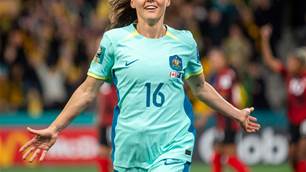
Aussies Abroad: Dub champions gutted, ribbons Raso on the move, and transfers, transfers, transfers
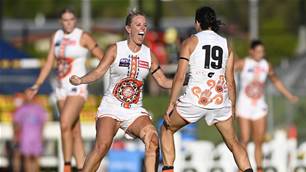
Updated: AFLW Round 2 preview and schedule
